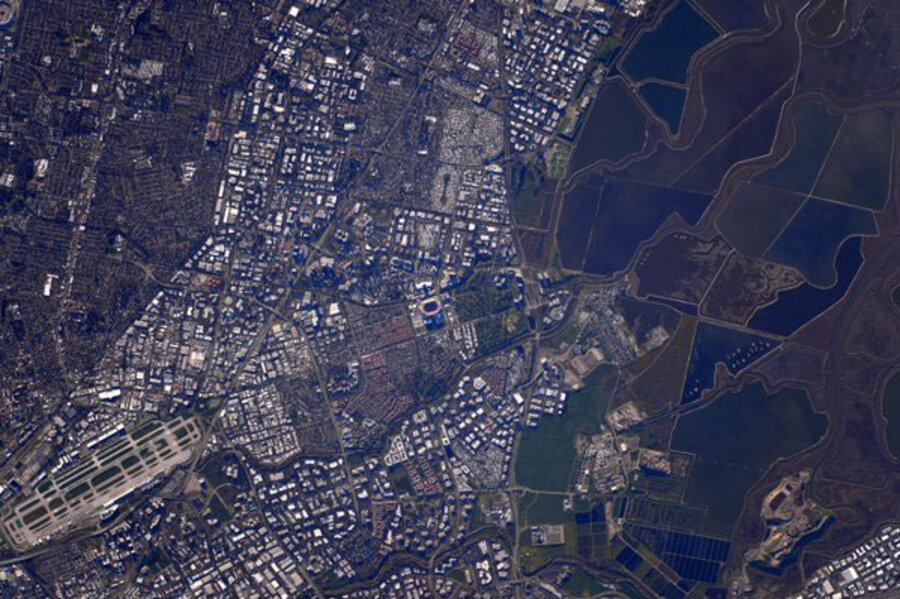Scott Kelly's Super Bowl party had the best view on – and off – Earth
Loading...
Scott Kelly may not have been at Levi’s Stadium to watch Super Bowl 50 Sunday night, but he may still have had one of the best seats in the house.
The American astronaut saw the big game live from aboard the International Space Station (ISS), orbiting about 250 miles above Earth. Taking the day off his NASA duties, Mr. Kelly – who is spending a year on the station as part of a program to understand the long-term effects of living in space – kept Twitter updated with his Super Bowl-related activities:
But the ties between the space program and sports are more than superficial. NASA’s Ames Research Center – located less than 10 miles from the stadium in Santa Clara, Calif., where Super Bowl 50 took place – pioneered the shock-absorbing technology used to pad football helmets today. NASA scientists also had a hand in testing the bullet-stopping properties of Lexan, the material used to create the shell of players’ headgear.
Broadcast communications has also benefited from NASA research: the agency’s Telstar 1 satellite, developed in 1962, ushered in the era of satellite television. The descendants of that technology made it possible for about 160 million viewers from more than 170 countries to see the Denver Broncos defeat the Carolina Panthers on Sunday.
Today, the Ames Research Center is using sports to make the concept of aerodynamics – the study of how air flows around objects – more relatable and understandable to a new generation of researchers. Aerodynamics allows NASA’s engineers to chart the best course to Mars, or build a more Earth-friendly aircraft; at Ames, scientists are using sports balls to demonstrate those concepts in a relatively simple, visual form.
“Sports provide a great opportunity to introduce the next generation of researchers to our field of aerodynamics by showing them something they can relate to,” said Rabindra Mehta, chief of the Experimental Aero-Physics Branch at Ames, in a statement.
Back on the ISS, Kelly – whose term aboard the station ends in March – wrapped up his singular coverage of the Super Bowl with a stunning image of San Francisco from space.








